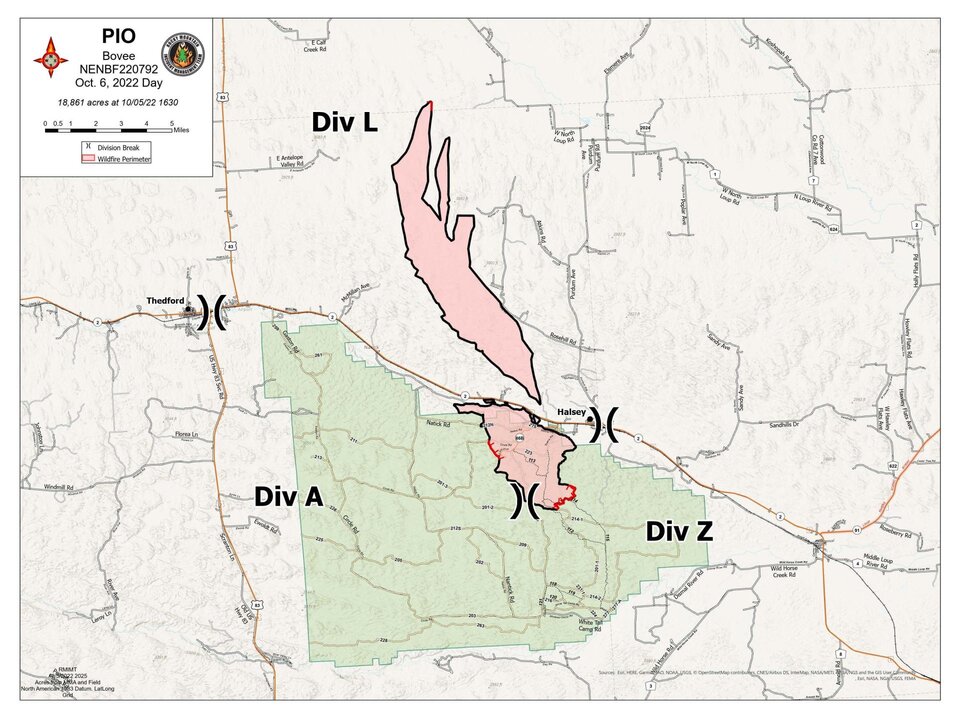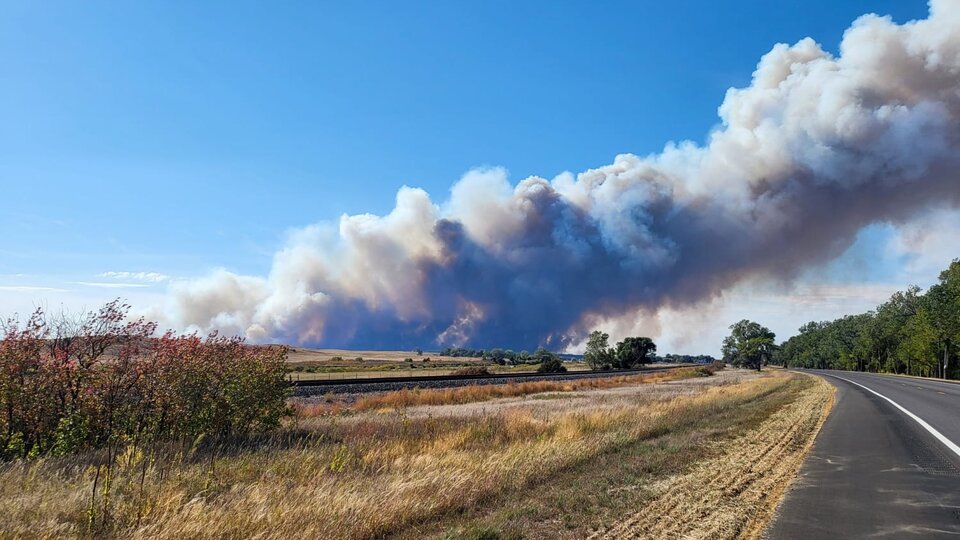At 50,000 km2, the semi-arid grasslands of the Nebraska Sandhills are the largest stabilized fragile sand dunes in the western hemisphere and reside over an important water resource, the Ogallala Aquifer. The Sandhills offer many ecosystem services, including essential habitat for countless migratory and domestic wildlife species, and grazing in support of the state's $12 billion/year livestock industry.
A major threat to the Sandhills is the encroachment of eastern redcedar (Juniperus virginiana) and the localized expansion of ponderosa pine (Pinus ponderosa). Eastern redcedar is encroaching on more than 25,000 acres of land in Nebraska per year.
Consequently, areas impacted by woody species invasion tend to experience shifts in ecosystems and the services they provide, including declines in species richness and diversity, reductions in net primary productivity and forage availability with subsequent impacts on livestock rearing communities, ecohydrological alterations leading to reduced soil water, shift in microbial communities and biogeochemical cycles, shift in fire regimes and the emergence of respiratory problems in humans in response to pollen.
Climate variability and change, and land use and landcover change continue to affect fire regimes and subsequent forest-grasslands ecosystem dynamics, functioning, and resilience, including the plant-soil-water nexus immediately after fire. Monitoring post-fire effects on vegetation structure and composition, soil health, water availability and their interactions is important for understanding ecosystems’ regime shifts and resilience, as well as developing and implementing locally and regionally relevant adaptive management practices after fire.

Bovee Fire Nebraska National Forest
The encroachment of woody species into the grasslands has increased the risk of catastrophic wildfires with serious ecological, human and economic losses. The recent Bovee Fire at the Nebraska National Forest at Halsey is a prime example of this, where over 19,000 acres of grasslands and forests were burned in October 2022. The forest is the largest man-made one in the United States. It was established on the semi-arid grasslands of the Sandhills in 1903 and includes 25,000 acres of hand-planted conifers (with eastern redcedar and ponderosa pine being the two main species). Some of the most concerning impacts of the current wildfires in this mature forested area are on vegetation structure and composition, as well as soil functional integrity, and resilience after the fire.
Goals and Objectives
This research aims to investigate post-fire indicators of ecological recovery and regime shifts in grasslands and planted forests of eastern redcedar and ponderosa pine at the Nebraska National Forest, Halsey. Specifically, this project will:
- Determine the system that will emerge post-fire: grassland or woodland.
- Assess environmental drivers (e.g., climate, soil health and water availability) that determine the type of vegetation and regime shifts post-fire.
- Implement advanced data analysis tools to detect signals of recovery or regime shifts.
- Engage with diverse managers and landowners to codevelop adaptive management plans and provide our diverse students with experiential learning related to fire ecology and recovery of land.
